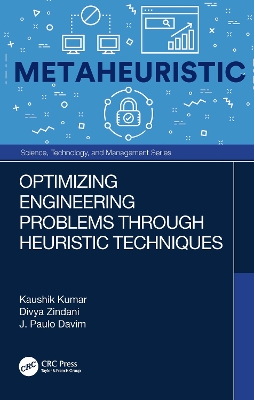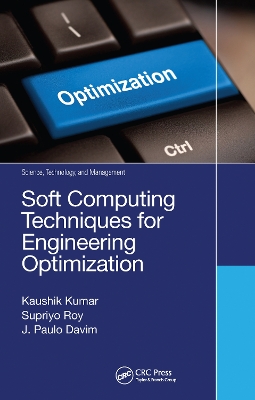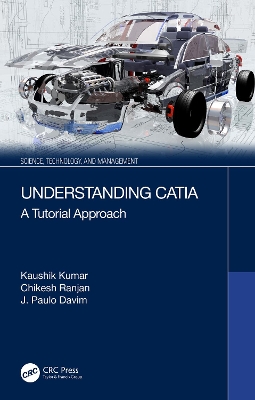Science, Technology, and Management
3 total works
Optimizing Engineering Problems through Heuristic Techniques
by Kaushik Kumar, Divya Zindani, and J. Paulo Davim
This book will cover heuristic optimization techniques and applications in engineering problems. The book will be divided into three sections that will provide coverage of the techniques, which can be employed by engineers, researchers, and manufacturing industries, to improve their productivity with the sole motive of socio-economic development. This will be the first book in the category of heuristic techniques with relevance to engineering problems and achieving optimal solutions.
Features
- Explains the concept of optimization and the relevance of using heuristic techniques for optimal solutions in engineering problems
- Illustrates the various heuristics techniques
- Describes evolutionary heuristic techniques like genetic algorithm and particle swarm optimization
- Contains natural based techniques like ant colony optimization, bee algorithm, firefly optimization, and cuckoo search
- Offers sample problems and their optimization, using various heuristic techniques
Soft Computing Techniques for Engineering Optimization
by Kaushik Kumar, Supriyo Roy, and J. Paulo Davim
This book covers the issues related to optimization of engineering and management problems using soft computing techniques with an industrial outlook. It covers a broad area related to real life complex decision making problems using a heuristics approach. It also explores a wide perspective and future directions in industrial engineering research on a global platform/scenario. The book highlights the concept of optimization, presents various soft computing techniques, offers sample problems, and discusses related software programs complete with illustrations.
Features
- Explains the concept of optimization and relevance to soft computing techniques towards optimal solution in engineering and management
- Presents various soft computing techniques
- Offers problems and their optimization using various soft computing techniques
- Discusses related software programs, with illustrations
- Provides a step-by-step tutorial on how to handle relevant software for obtaining the optimal solution to various engineering problems
This book provides a key understanding of CATIA which is a solid modeling software. By using screen shots of step-by-step training, the reader will obtain comprehensive knowledge of all tools provided in CATIA for use in a variety of engineering fields.
The book introduces CATIA basics, covers part design, discusses sheet metal design, talks about assembly, presents drawings and shows modeling of an engineered component.
The primary aim of this book is to assist in learning the use of CATIA software through examples taken from various areas of engineering. The content and treatment of the subject matter is most appropriate for university students studying engineering and practicing engineers who wish to learn the use of CATIA.


